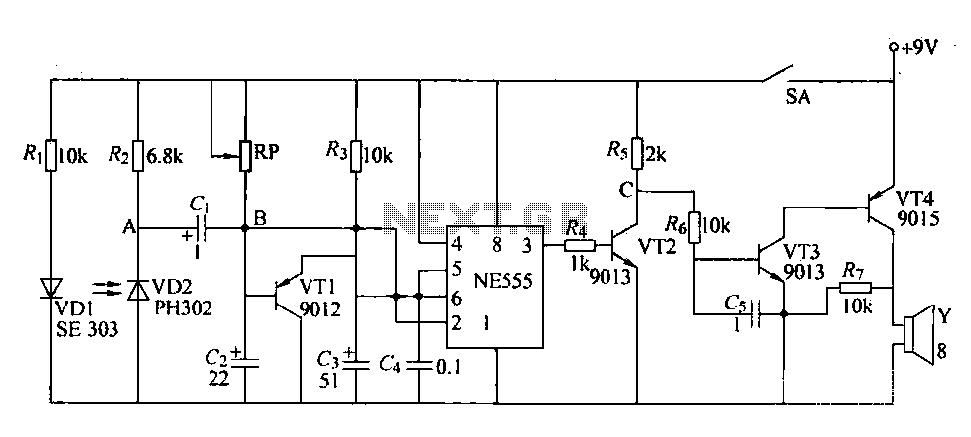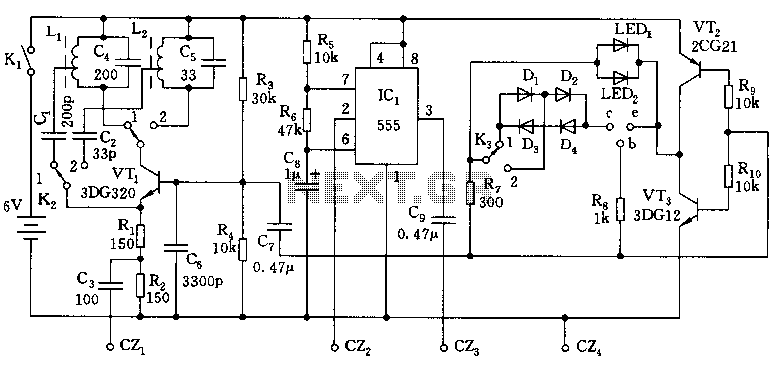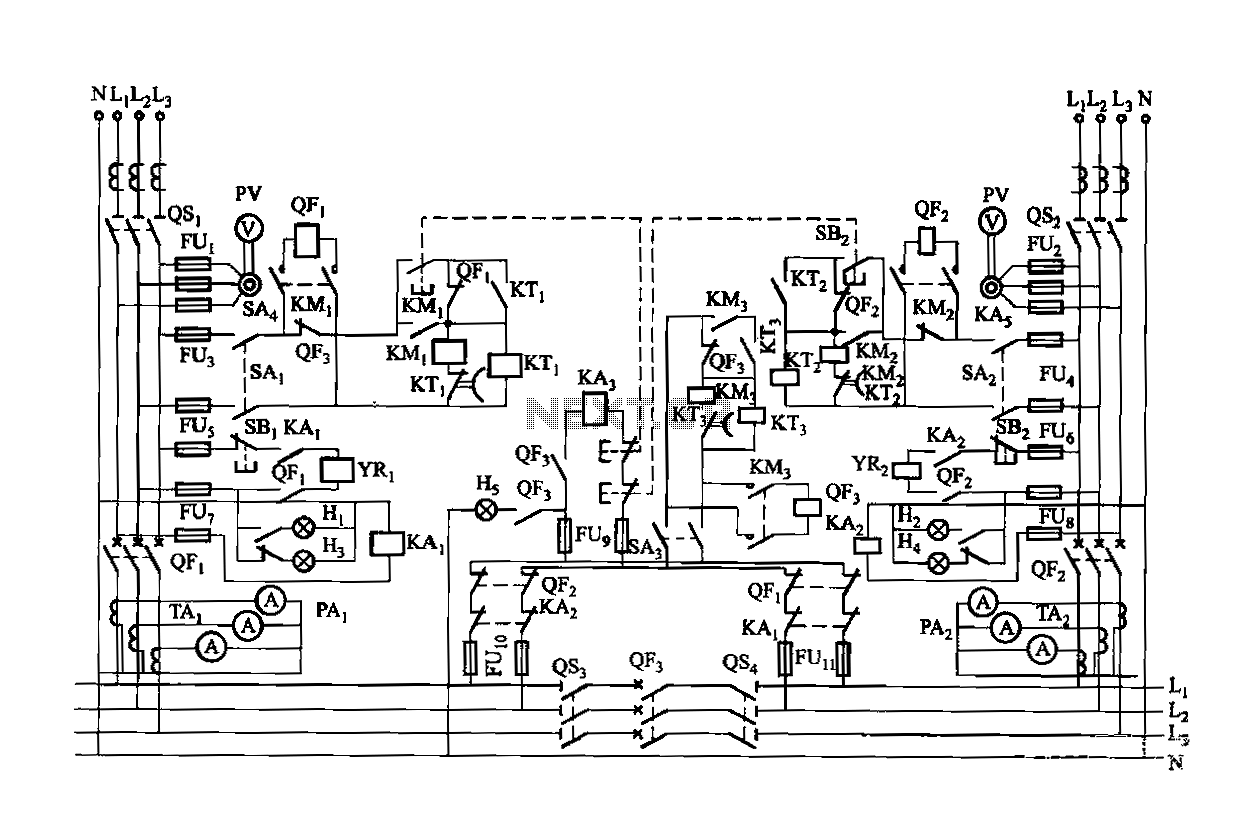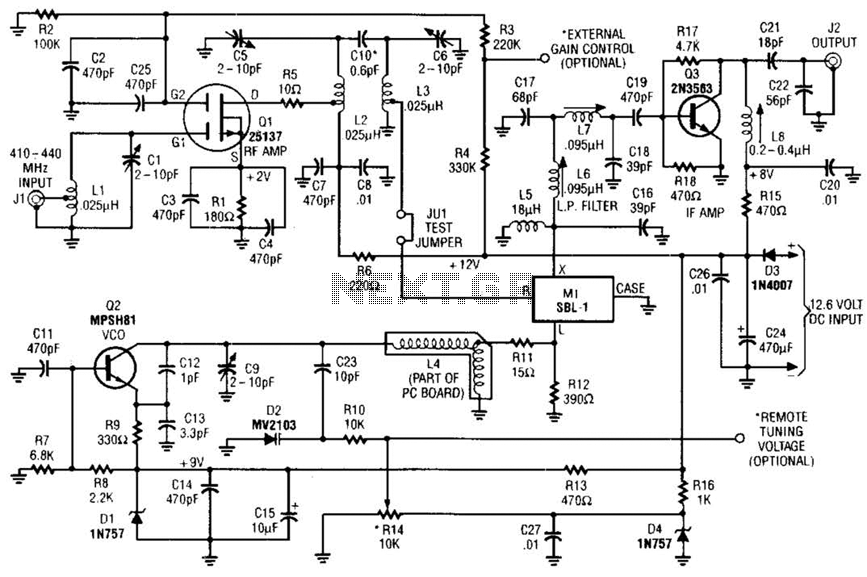
Wheat planter particles clogging circuit

The circuit is designed to detect clogging in a wheat planter by utilizing light-emitting diodes (LEDs) and photodiodes. When the light path is obstructed by particles, the photodiode receives less light, causing the resistance of VD2 to increase. This change in resistance leads to a rise in voltage at the output pin of the NE555 timer, triggering an alarm signal that activates a speaker.
In this clogging detection circuit, the arrangement of LEDs and photodiodes plays a crucial role in monitoring the flow of wheat seeds through the planter. The LEDs emit light that is directed towards the photodiodes positioned at the outlet. Under normal operating conditions, the light emitted by the LEDs reaches the photodiodes, allowing them to function correctly. However, when particles such as soil or seed clog the outlet, the light path is obstructed.
This obstruction results in a decrease in the light intensity received by the photodiode. The photodiode, which operates as a light sensor, detects this reduction in light and responds by increasing the resistance of VD2, which is a variable resistor in the circuit. The increase in resistance alters the voltage level at the NE555 timer's input pin, causing the output voltage to rise.
The NE555 timer is configured in a monostable mode, which means it is designed to produce a single output pulse in response to a triggering event. In this case, the triggering event is the change in voltage caused by the increased resistance of VD2. Once the voltage surpasses a certain threshold, the NE555 timer activates, sending an alarm signal through its output pin.
This alarm signal is then utilized to drive a speaker, which emits a sound to alert the operator of the clogging condition. The use of the NE555 timer in this circuit is advantageous due to its reliability and ease of implementation. The circuit can be powered using a standard power supply, and the sensitivity of the photodiode can be adjusted by modifying the resistance values in the circuit.
Overall, this clogging detection circuit is an effective solution for ensuring the smooth operation of wheat planters, minimizing downtime caused by blockages, and facilitating timely intervention by the operator.FIG clogging circuit wheat planter particles. In this circuit, the light-emitting diodes and photodiodes arranged in planting at the outlet - will be blocked, if blocked light received by the photodiode, so VD2 resistance will increase, the voltage NE555 foot rise pin output alarm signal, the speaker sound.
In this clogging detection circuit, the arrangement of LEDs and photodiodes plays a crucial role in monitoring the flow of wheat seeds through the planter. The LEDs emit light that is directed towards the photodiodes positioned at the outlet. Under normal operating conditions, the light emitted by the LEDs reaches the photodiodes, allowing them to function correctly. However, when particles such as soil or seed clog the outlet, the light path is obstructed.
This obstruction results in a decrease in the light intensity received by the photodiode. The photodiode, which operates as a light sensor, detects this reduction in light and responds by increasing the resistance of VD2, which is a variable resistor in the circuit. The increase in resistance alters the voltage level at the NE555 timer's input pin, causing the output voltage to rise.
The NE555 timer is configured in a monostable mode, which means it is designed to produce a single output pulse in response to a triggering event. In this case, the triggering event is the change in voltage caused by the increased resistance of VD2. Once the voltage surpasses a certain threshold, the NE555 timer activates, sending an alarm signal through its output pin.
This alarm signal is then utilized to drive a speaker, which emits a sound to alert the operator of the clogging condition. The use of the NE555 timer in this circuit is advantageous due to its reliability and ease of implementation. The circuit can be powered using a standard power supply, and the sensitivity of the photodiode can be adjusted by modifying the resistance values in the circuit.
Overall, this clogging detection circuit is an effective solution for ensuring the smooth operation of wheat planters, minimizing downtime caused by blockages, and facilitating timely intervention by the operator.FIG clogging circuit wheat planter particles. In this circuit, the light-emitting diodes and photodiodes arranged in planting at the outlet - will be blocked, if blocked light received by the photodiode, so VD2 resistance will increase, the voltage NE555 foot rise pin output alarm signal, the speaker sound.





